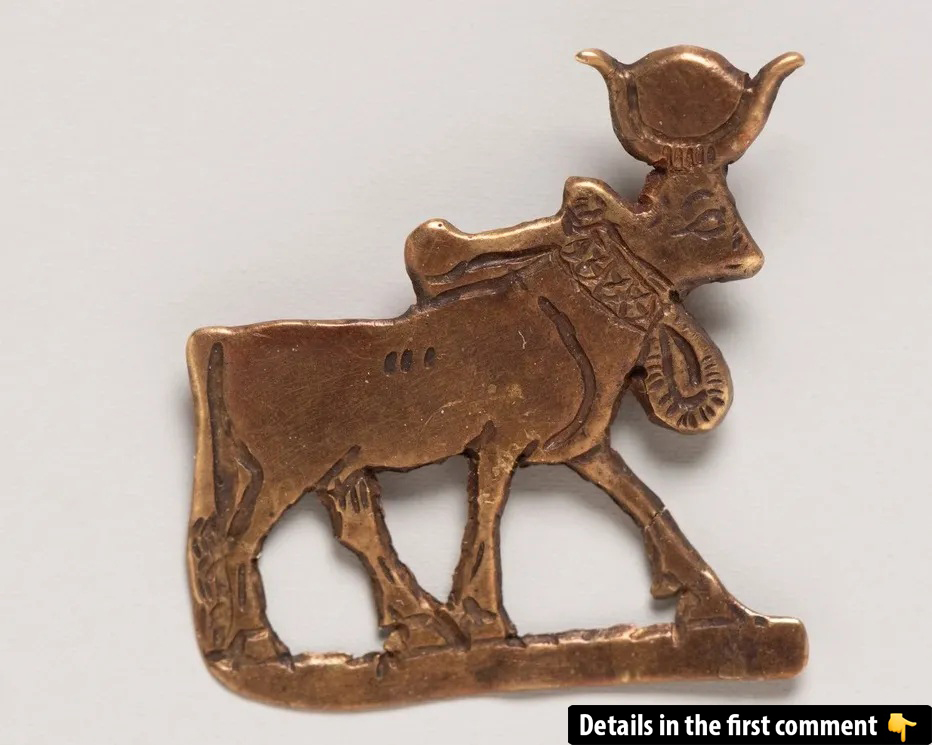In ancient Egypt, the reverence for animals went beyond mere symbolism, intertwining their existence with the gods and royal power. Among the most significant creatures were bulls and cows, embodying strength, fertility, and divine authority. From the sacred Apis bull to the nurturing qualities of Hathor as a cow goddess, these animals played pivotal roles in religious rituals and the affirmation of kingship. Their presence in Egyptian culture reveals a fascinating blend of spirituality, governance, and the natural world.
The Role of Bulls in Religious Ceremonies
Bulls held a particularly sacred place in ancient Egyptian culture. These powerful animals were associated with divine strength, renewal, and life itself. Bulls were used in various religious ceremonies, often representing the god Ptah, the creator god of Memphis. In many temples and ceremonial spaces, bulls were sacrificed in rituals designed to appease the gods, ensuring the prosperity of the land and the renewal of life.
These sacrificial acts symbolized the cyclical nature of life and death, playing a central role in the ancient Egyptian worldview. The bull’s sacrifice, while solemn, was seen as a means of purification, often performed to restore harmony between the gods and the pharaoh, ensuring that Egypt remained blessed by divine favor.
The significance of bulls in Egyptian society was not merely symbolic; they were also a demonstration of the divine legitimacy of the pharaohs. As symbols of strength and virility, bulls reflected the pharaoh’s own power and divine mandate. Pharaohs would often perform sacrifices of bulls to mark important events, such as royal coronations or military victories, showcasing their connection to the gods and reaffirming their divine right to rule.
Video
Tune into this video from the Egypt History Podcast to learn the full story of the Apis Bull, one of the most sacred animals in ancient Egyptian history.
The Reverence for Cows
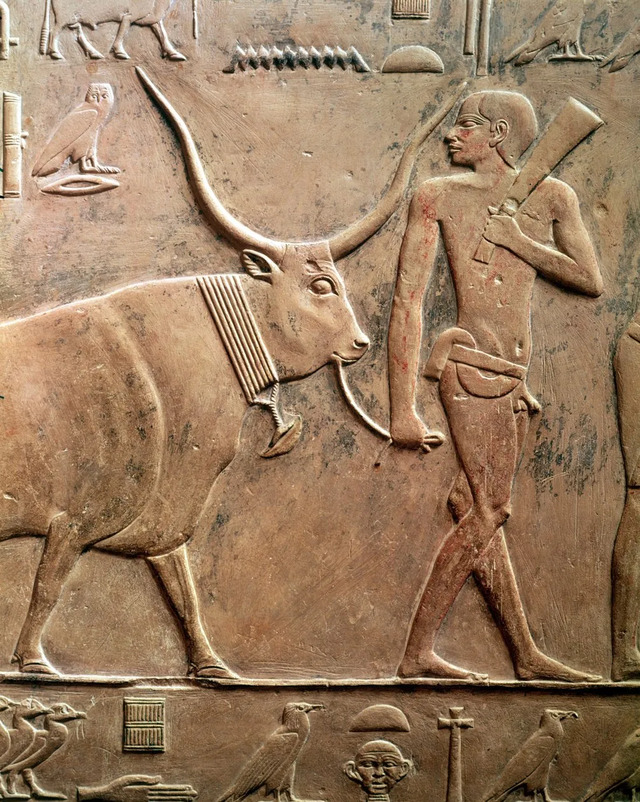
While bulls were revered for their strength and association with powerful gods, cows had a different, equally significant role in Egyptian culture. Cows were deeply linked to femininity, motherhood, and fertility, especially through their association with the goddess Hathor. Hathor, one of the most important deities in the Egyptian pantheon, was often depicted with cow horns or even as a cow herself, embodying the nurturing qualities of motherhood, love, and fertility. As the goddess of music, dance, and joy, Hathor’s cow form symbolized the life-giving and protective qualities of motherhood.
Isis, another prominent goddess in Egyptian mythology, also shared a connection with cows. As the protective mother of Horus, Isis was often depicted with cow imagery, particularly in her maternal and protective role. Cows in Egypt were seen as sacred animals, symbolizing the fertility of the land and the protection of families. Their reverence is evident in various historical accounts, including those by Herodotus, who noted the Egyptians’ deep respect for cows, so much so that they were considered untouchable and off-limits for sacrifice. Instead, cows were symbols of life, prosperity, and nourishment, reflecting the Egyptians’ belief in the importance of balance between the physical and spiritual realms.
The Cult of Apis
At the heart of Egypt’s sacred bull worship was the cult of Apis, a divine bull associated with Ptah, the creator god of Memphis. The Apis bull was believed to embody the physical manifestation of the god Ptah, and later, Osiris, the god of the afterlife. This bull was no ordinary animal; it was selected based on a set of precise physical criteria. An Apis bull had to be black with a white triangle on its forehead, an eagle-shaped mark on its back, and a scarab-shaped mark under its tongue. This strict selection process was seen as a divine sign, confirming the bull’s sacred status.

Once identified, the Apis bull was treated with the utmost reverence. It was housed in a special temple, known as the “House of Apis,” where it lived in luxurious conditions, far removed from the harsh realities of everyday life. The bull was fed a diet fit for a deity, including fresh vegetables, fruits, and high-quality grains, ensuring that it remained in peak condition. Priests performed daily rituals and offerings to the bull, treating it as a living god, and even performed purification ceremonies to maintain its divine sanctity.
The Treatment of the Apis Bull
The Apis bull’s divine status was marked by its elaborate treatment and ceremonies. Upon its “coronation,” the bull was paraded through the streets of Memphis, accompanied by grand celebrations and religious festivities. This event was not just a coronation; it symbolized the divine kingship of Egypt and reaffirmed the pharaoh’s connection to the gods. The Apis bull, as a living representation of the pharaoh’s power, was seen as an intermediary between humans and gods, bridging the mortal and divine realms.
The treatment of the Apis bull mirrored the lavish lifestyle of the pharaoh. Just as the pharaoh was treated as a living god, the Apis bull enjoyed similar privileges. It was not only a symbol of power but also a link to Egypt’s ancient beliefs about divine kingship. The bull’s participation in royal rituals and its central role in religious ceremonies emphasized its significance in Egyptian society, marking it as a key figure in the kingdom’s spiritual and political life.
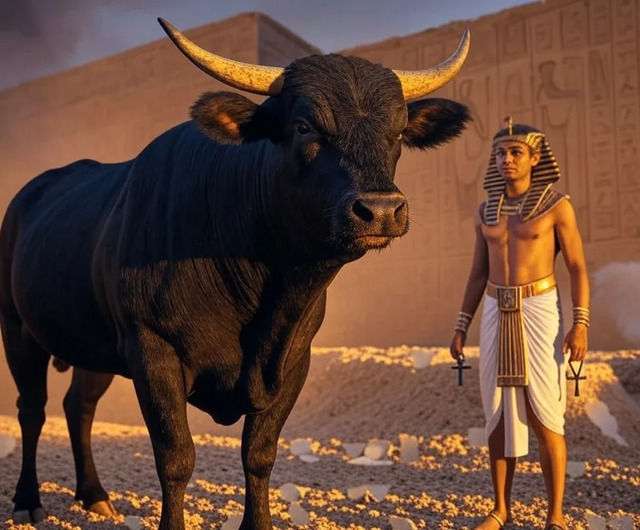
The Death and Mummification of the Apis Bull
The death of the Apis bull was a solemn and significant event in ancient Egypt. When the bull died, its death was treated with the same reverence as the passing of a pharaoh. The bull was mummified with great care, and elaborate funerary rituals were performed to ensure its safe journey into the afterlife. The process of mummification for the Apis bull included special ceremonies and offerings, reflecting the belief that the bull would continue to serve as an intermediary between the living and the divine.
Once the Apis bull passed away, a search began for a new bull to take its place. The new bull, once found, underwent a ceremonial “coronation” and was treated as a living god. The transition from one Apis bull to the next was a sacred event, reaffirming the continuity of divine kingship and the relationship between the pharaoh and the gods.
The Procession of the Apis Bull
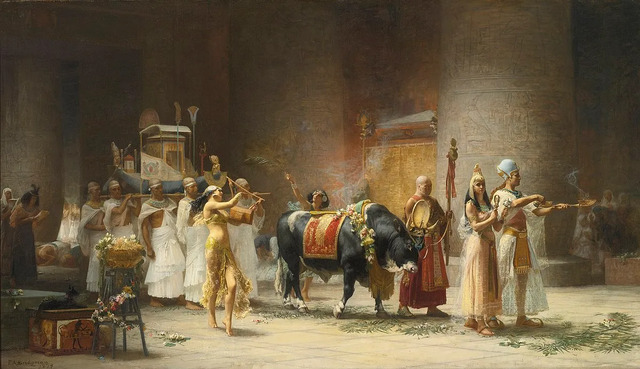
One of the most iconic aspects of the worship of the Apis bull was its procession. The bull’s coronation was marked by a grand procession, during which it was paraded through the streets of Memphis. This event was more than just a ceremonial formality; it was a deeply symbolic act, celebrating the divine right of the pharaoh to rule and reinforcing the sacred bond between the king and the gods. The procession was a grand occasion, accompanied by music, dance, and religious rites that highlighted the importance of the Apis bull in the cultural and religious life of Egypt.
The Serapeum of Saqqara
The Serapeum of Saqqara, one of the most important archaeological sites related to the worship of the Apis bull, served as the burial place for these sacred animals. Discovered by the French Egyptologist Auguste Mariette in 1850, the Serapeum consists of underground galleries and chambers, where the mummified remains of the Apis bulls were housed in large, precisely carved granite sarcophagi. The site offers a fascinating glimpse into the religious practices surrounding the Apis bull, with its massive tombs and intricate rituals that celebrated the divine status of these animals.
The Serapeum’s precise construction and the engineering feats involved in moving the massive sarcophagi have puzzled researchers for years, adding to the mystique of the site. The Serapeum not only served as a burial place but also as a site for rituals that honored the Apis bull and its connection to the gods.
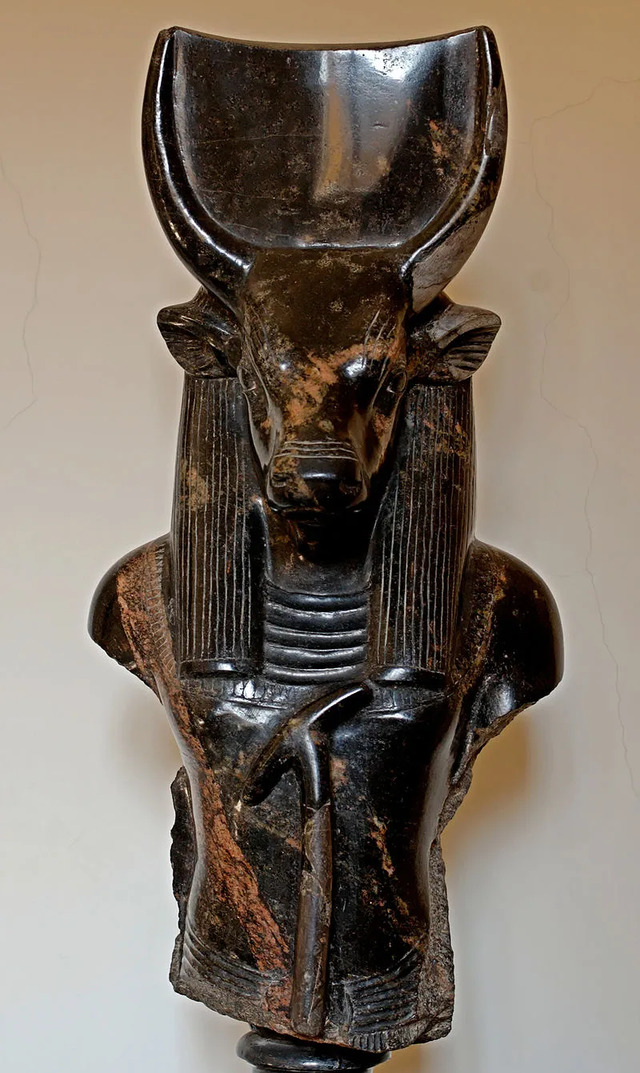
Conclusion
The bulls and cows of ancient Egypt were much more than just livestock; they were sacred creatures with deep spiritual significance. Through their connection to the gods, particularly Ptah and Osiris, and their roles in the rituals of kingship, they embodied the strength, fertility, and divine authority that defined ancient Egyptian culture.
The worship of the Apis bull, in particular, offers a unique window into the religious and political life of Egypt, highlighting the intricate relationship between the pharaohs, the gods, and the land they ruled. Through ceremonies, rituals, and sacred rites, the Egyptians ensured that the legacy of these divine bulls lived on, securing their place in the annals of history as symbols of life, death, and kingship.
